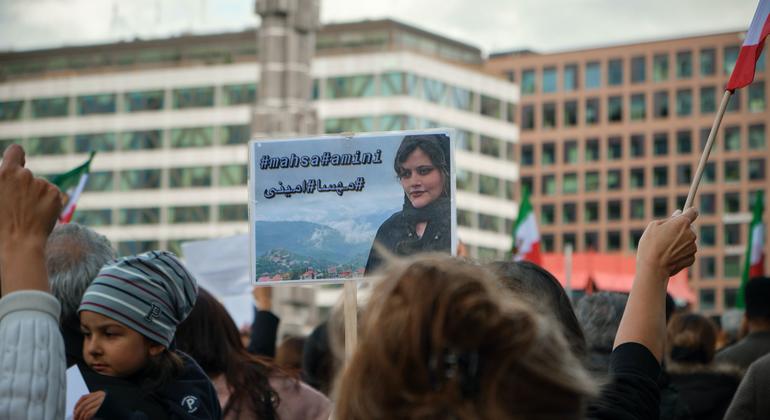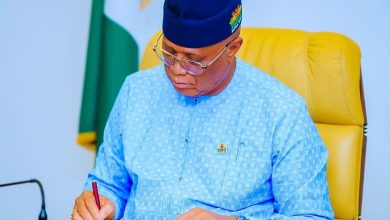UN rights group launches Iran human rights inquiry

The council, meeting in a special session in response to the crisis caused by the death in September in police custody of Jina Mahsa Amini, 22 years old, heard Mr. Türk criticize “the negative mindset of those who use power” in Iran.
The “unnecessary and unjust use of power” must end, he stressed.
Harrowing pictures
“I am saddened to see what is happening in the country,” he told the packed chamber. “Pictures of children killed. Of women beaten outside. Of people sentenced to death.”
The UN High Commissioner revealed how the security forces, “especially the Islamic Revolutionary Guard Corps and the Basij forces have used live ammunition, birdshot and other metal pellets, tear gas and batons” against the opposition movement as it spread to 150 reported cities and 140. Universities in all regions of Iran.
Before calling for an independent investigation into all the alleged rights violations, the High Commissioner noted that his Office had received “numerous communications” from Iran about the incident, “including domestic investigations.” These efforts “have failed to meet international standards of impartiality, independence and transparency”, said Mr. Türk.
Official denial
In response to the High Commissioner’s comments, Iran’s representative, Khadijeh Karimi, Deputy Vice President for Women and the Family, stressed that “serious measures” have been taken to seek justice by the Government, after the death of Ms. Amen. These include an independent establishment, a parliamentary inquiry committee and a forensic medical group.
“However, before the announcement of the investigation, the indifference and the haste of a number of Western officials and their involvement in the internal affairs of Iran, turned peaceful gatherings into riots and violence,” he maintained. .
Also speaking at the Special Assembly – the 35th Assembly since it was founded in 2005 – Javaid Rehman, Special Rapporteur on the situation of human rights in Iran stressed that in the last week, efforts to silence protesters have increased, with against children.
Child victims among the dead
At least 60 to 70 people were killed, he said, including five children, mostly from Kurdish areas. He also described as “reassuring” the situation in the Kurdish cities of Piranshahr, Javanrood and Mahabad.
“The Iranian government has always presented unconfirmed reports and claims that Jina Mahsa did not die as a result of any violence or beating,” he said. “In other news, the Government denounced the killing of children by the armed forces, saying they committed suicide, fell from a height, were poisoned or killed by their anonymous ‘enemy agents’.”
These are three of the 400 degrees that have been killed because they stood up for their right to decide their own lives.
Hijab rules
Since Ms. Amini died after her arrest by Iran’s Moral Police on September 13 for not wearing her hijab properly, more than 300 people have been killed in protests, including at least 40 children. , according to the latest UN office statement.
At least 15,000 people have been arrested “and the Iranian government is now threatening the protesters with the death penalty,” said German Foreign Minister Annalena Baerbock, who first called for the Special Assembly: “And why? Simply because women, men and children want to enjoy the rights we all want to enjoy: to live in dignity and without discrimination.”
Conveying that message, US Human Rights Representative in Geneva Michèle Taylor told the Commission that the Iranian people “are asking for something simple, something that most of us here take for granted: the opportunity to speak and to be heard.” We applaud their courage, especially the women, girls and young people who bravely demand respect for their human rights and testify against abuse.”







